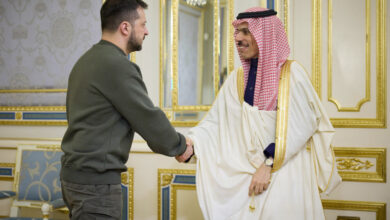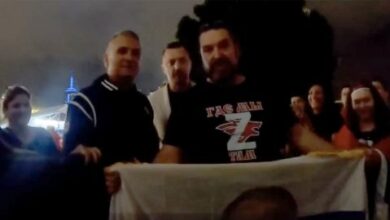Through his work in performance art and visual theater, Ahmed el-Sayed Ahmed engages with contemporary dance forms by experimenting with different mediums and portrayals of dance. Ahmed, whose nom de guerre is Rouby, is an Egyptian experimental artist who has presented his work both in Egypt and abroad, in myriad forms that include performances, videos and installations.
In the context of his project–a series of short films that negotiate notions related to dance and show how dance becomes image–Rouby presented one of his latest videos in Cairo last month, entitled “Shape Shadow.” The video was screened as part of a series of short videos and film screenings, created by the HaRaKa contemporary dance project, focusing on themes of dance and the body. The screenings are taking place at the Townhouse Gallery of contemporary art.
Video-dance and dance films differ from the documentation of dance performances, the latter being reproductions of an already existing narrative. Dance films, by contrast, draw on dance to construct a visual narrative, in which dance represents the central element.
Some critics say the genre dates back to early cinematic experimentation, a theory validated by the fact that cinema first began based on body and movement–long before voice and text were introduced. Movement for camera, therefore, is hardly a novel technique.
“Shape Shadow” is based on the choreography and performance of American dancer Alice Johnson, and her relationship with an imagined “other.” Parallelism and duality, therefore, are central concepts to the video. Stories from the Aria soundtrack intersect with the image and visual signals, bringing out this duality and parallel possibilities of meaning.
In the film, Rouby extracts the dance out of its space and frames it. His scene is set in a none-space kind of space: a black background, a lone body dancing, until another appears to dance with it. The director’s strategy is to work constantly with dancers in imaginary spaces, while the actual space becomes unnecessary. This allows Rouby to ask his overriding question: “What is the essence of dance?”
In another video by Rouby, “Resonance,” the dance is extracted outside its spatial moment of happening as it was shot. It is removed as an image and placed against a monochromatic background in the final image. Here, Rouby uses another strategy–that of manipulating colors, creating an amorphous figure of what seems to be the image of two dancers. Such techniques of color reduction, spatial extraction and abstractly filmed bodies are all ways of posing the question on the essence of dance.
In a discussion with Rouby after the film, the audience raised questions on the relation between the soundtrack, images and concepts. The sound and images that we see in the videos are processed in a way that tries to create a certain state of mind, placing the audience in an experience rather than in a process of logical deduction.
Rouby explained how he had created 16 versions of “Shape Shadow” with different soundtracks, from Um Kolthoum to Maria Callas singing “Casta Diva,” with the latter featured in the final version presented–which thrilled the audience as they discovered “Video-dance.”
Claiming that dance can be captured in a moving or still image is quite ambitious. What is it that remains when a dance is filmed or photographed? Is the dance merely the visual representation that we witness? Or is it the rhythm that we almost hear, even if the dancer is moving in silence? Is the dance the intricate system of signs that our bodies and memories respond to, with a subtle sensitivity to cultural mores? Or is the dance all of these rich and complex layers? And if it is the latter, then how can it be captured?
Rouby’s work, within the context of video-dance as a medium, raises all these questions through an experiential approach towards artistic engagement.




